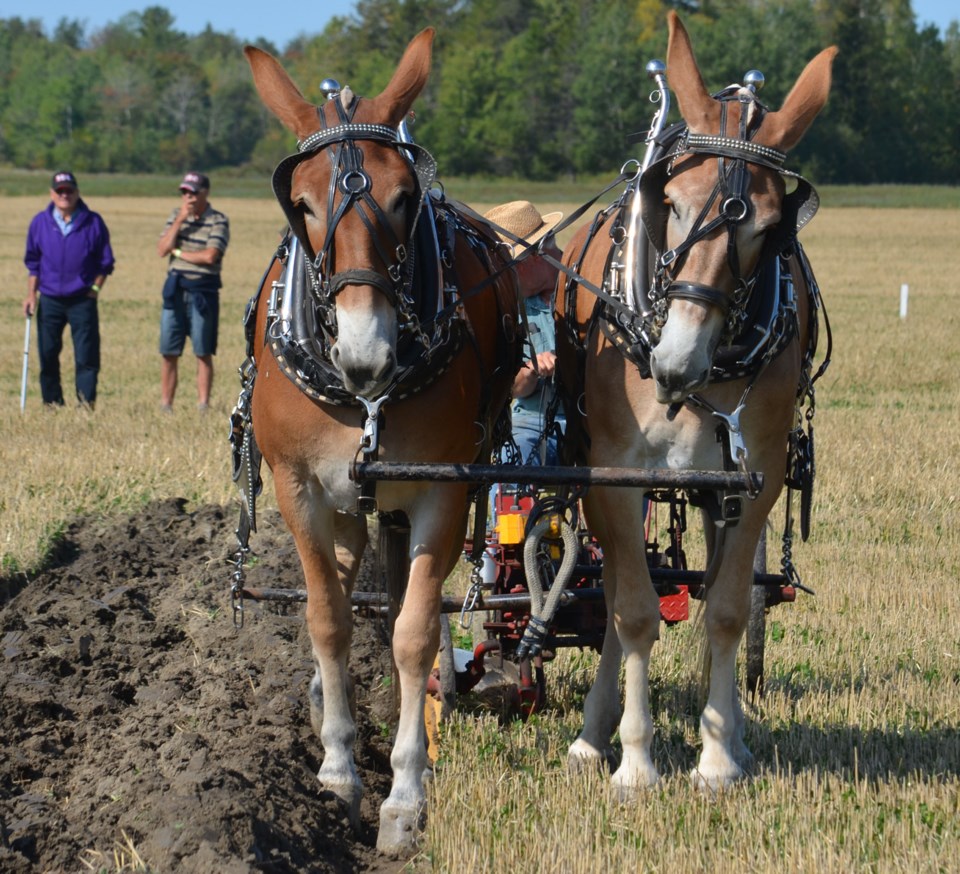Kudos and congratulations must go out to the organizers and volunteers of the 2019 International Plowing Match in Verner. The exhibitions and displays of all things farming were very impressive. The many schoolchildren who attended seemed to be amazed by the size of the everyday equipment that farmers use and the huge size of the horses somehow exceeded their expectations. I guess a Clydesdale on the screen of a cell phone just doesn’t cut it.
To see a bull chasing cowboys during the rodeo was apparently awesome and I am certain some young ones could picture themselves riding horses like the Canadian Cowgirls. There were displays and attractions that might not seem like things farmers do, like chainsaw carving, although my uncle Gordon could do some fancy cutting with his old Pioneer saw. I never did see any farmer climb a hydro pole but I’m sure some could if necessity demanded it. Anyone growing up on a farm certainly knows enough to run away from a bull, even though it might have been trained for rodeo shows.
I am hopeful there will be classroom discussions on the various pieces and sizes of the equipment farmers use to cultivate and harvest the foods we eat. It is very different from the rototiller used in the home garden patch compared to the massive cultivators and plows pulled by an air-conditioned tractor used on the large farms today. Farming today has evolved from my days living in the country seventy years ago, even as it has over the eons since we first planted grains, gathered eggs and nuts, and wore animal hides to survive the weather and bugs.
The politicians were out in force to show their support (and gather a few votes) for the farming sector. They had grants to help farmers in the production of grains, honey, eggs, chicken, pork, lamb and beef as well as drainage systems and all things food-related. This is, of course, an anathema to the growing group of people who are against all things produced by the domestication of animals - bird, beast, and fish alike. (I still haven’t figured out how they feel about owning dogs, cats, and canaries). Maybe we are approaching the era in our civilization when all our protein (for us and our pets) will be grown in a laboratory factory Pitri dish or on land with no connection to man or animal power, but in the meantime, I love to see horses pulling a plow to till the land.
The thing is, the horses and mules seem to enjoy what they are doing as they carefully walk a straight line along the lead furrow. They don’t even mind a little hand applause and are definitely willing to give a nod to the camera. I overheard one of the plowmen say he had never seen so much interest in the horse plowing as this year. Horses do have a little more character than a huge diesel tractor hauling a set of blades although as a practical matter the horse plowing is for show not business.
The two teams of mules did draw quite a bit of attention. The mules at this IPM were bred for size and strength. Pound-for-pound a mule is stronger than a horse; has more durability; eats less; and some say, is more intelligent than the horse. You may have heard the saying ‘stubborn as a mule’ and there may be some truth to that but it may also be because of the chores we have assigned them over the ages. The mule driver did not hesitate to make comparisons with the competition. Clydesdales, he said, are fussy and require a lot of ‘maintenance’; the Belgians are good workers and generally almost as strong as the Clydes but not as fancy or colourful (see the Budweiser ads). The Percherons are a little smaller, and quite amiable, but cannot work as long and hard as his mules.
Mules are the offspring of a mated donkey and a horse. I am not sure where this is covered in the revised sex curriculum but mules cannot reproduce (there are some reports of this happening but genetic testing casts doubts so far). Technically, the thing is that donkeys have 62 chromosomes and horses 64. The mule offspring has 63 and odd numbers just don’t work for reproduction. I’m certain the new curriculum explains it better.
This talk of breeding mixed in with the plethora of election signs had me making comparisons. All these large draft horses consume huge amounts of hay and water (taxes). Keeping these creatures in foot ware alone is expensive (mules have tougher hooves and are easier and less expensive to maintain) – think of the housing and travel allowances we pay our politicians. Their main purpose is for show although a few do actually work on farms. It is the tractors and machinery (civil service) that does all the real work. One of the by-products of these huge animals is horse manure and the politicians are surely busy spreading it right now.
I have not heard which teams won the plowing competition and indeed they were all winners for me. My favourites were the mules and this had me thinking that maybe that’s what we need in our politics: more mules and fewer show horses – a mix of the best of all worlds. I guess we could call it proportional representation or something like that.



